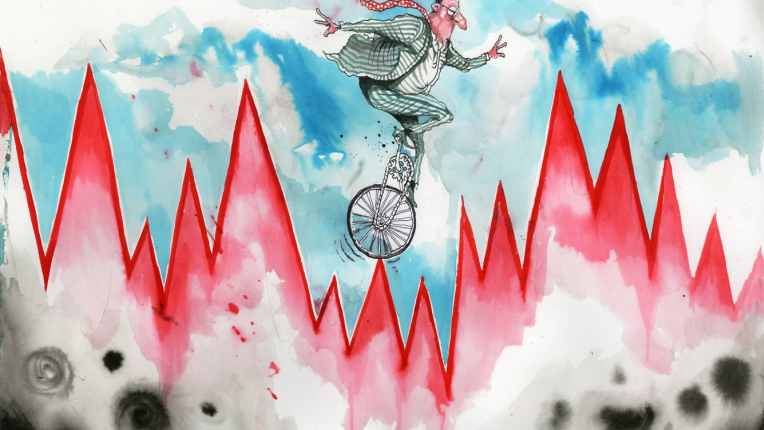Why quant legend says it's 26 days to a new normal
by James ThomsonRobbie Cooke, the chief executive of listed payment group Tyro, is a glass half-full type of guy. And the data on the slow reopening of the Australian economy is only adding to his confidence in better times ahead.
Tyro, in an example of transparency for which it deserves much credit, has been releasing weekly data on the transactions going through its platform, which serves 32,000 mainly small and medium businesses around Australia concentrated on hospitality (about 45 per cent of Tyro’s activity), retail (35 per cent) and health (12 per cent).
What Cooke has seen is a gradual but unmistakable fightback in the Australian business community.

“I am very much in the optimistic camp,” he says. “Businesses are resilient and people have reinvented themselves.”
April was the low point on Tyro’s platform. Where transaction volumes grew 30 per cent in February to $1.8 billion, they fell 38 per cent in April to $911 million.
But things have slowly picked up through the back half of May, as more parts of the economy have reopened.
In the first week of May, transaction volumes were down 20 per cent. By the end of the third week of the month, volumes were down 18 per cent.
Hospitality is still tough and health has proven slower to recover than Cooke expected. But retail is starting to pick itself off the canvass.
“We’re seeing this nice improvement as each week goes on and that’s very much coming through in the retail space,” Cooke says. “As more and more shops open up that will continue to come through.”
Optimism gets some momentum
It’s data like this, and similar measures of spending, mobility and activity from around the world, that is also starting to make investors pretty optimistic.
Another solid night on Wall Street overnight, where investors were buoyed by more glimmers of hope on COVID-19 vaccines and the further reopening of the US economy, means the S&P 500 now sits just 2.45 per cent below the level seen as the start of November 2019, the month when we now know the virus first emerged in China.
The gap in Australia is a little wider, with the ASX 200 down 13.3 per cent since the start of November. Nonetheless, optimism appears to be building here, as the picture of increasing economic activity painted by data such as that from Tyro becomes a bit clearer.
This was neatly demonstrated on Tuesday, when the ASX 200 climbed 2.9 per cent and officially emerged from a bear market (although Wednesday has seen some of those gains given up).
Investors are now acting in a way that says things will be back to whatever the new normal is ... in late June.
— Dan diBartolomeo
Two neat ways to think of the extraordinary change in investor psychology were provided overnight by quant legend Dan diBartolomeo, the founder of Northfield Information Services, who revels in solving tricky investor questions and is perhaps most famous for helping to finger Bernie Madoff.
DiBartolomeo has been watching the expected level of the annual volatility of the S&P 500 gyrate wildly over the past six months, from around 12 per cent in November 2019, to a peak of more than 60 per cent on March 13, and back to 40 per cent on April 15. The current level is around 26 per cent.
Using volatility and return expectations (and some maths well over Chanticleer’s head) Northfield has also been estimating US investors’ implied expectations about the length of the pandemic crisis.
In mid-March, as fears about the spread of COVID-19 surged, investors were expecting that the financial world wouldn’t get back to ‘new normal’ for about seven months, or around the middle of October.
By April, as governments and central banks turned the stimulus tap on full, the implied length of the crisis had fallen to five months, or a finish in mid-September.
But as of last night, the implied length of the crisis is now just 26 days, which Northfield says underscores the shift from pessimism.
“Investors are now acting in a way that says things will be back to whatever the new normal is, or at least not having financial markets disrupted, in late June,” diBartolomeo said.
Credit markets are looking better, too
He points out that the implied market expectations for a return to "normal" are much faster than the recovery predicted by health models such as that of the University of Washington, which see the medical emergency passing in August or September.
DiBartolomeo is also feeling increasingly optimistic about the outlook for credit markets given the recovery that has seen global equity markets come within 3 per cent of November levels; should worst come to worst, firms should have little problem raising equity to pay off interest and even principal.
“We don’t think that this is something that is going to have a material effect on credit-worthiness, other than a few industries where the effects of COVID-19 are being particularly felt.”